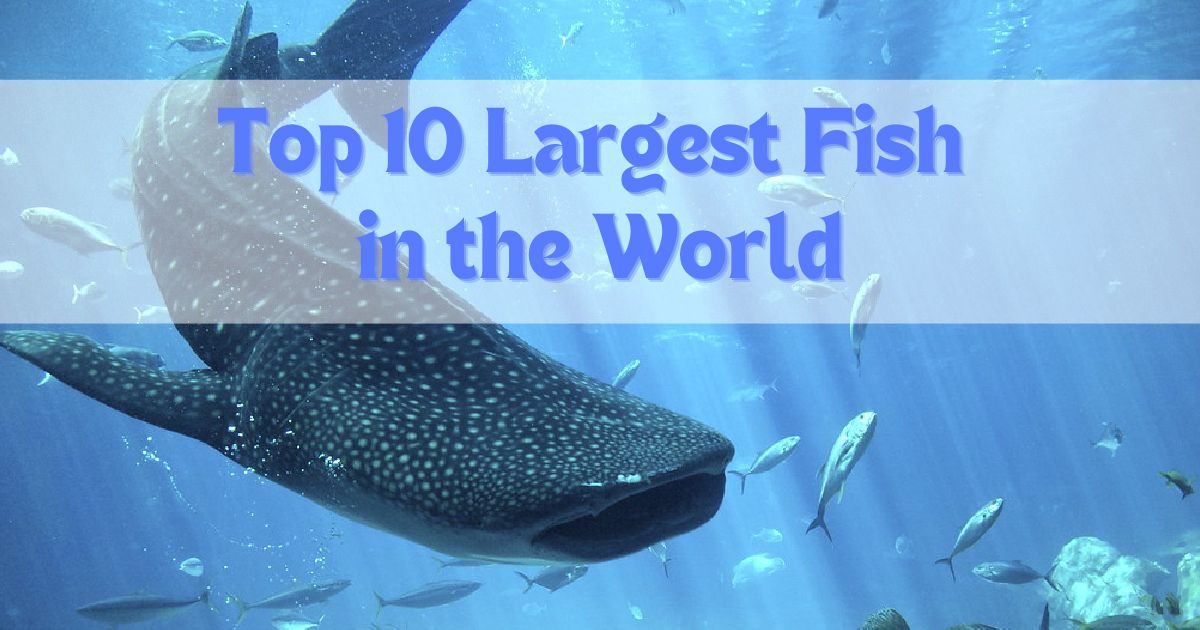The underwater world harbors some of the most fascinating and gigantic creatures on Earth. Among these are the largest fish in the world, showcasing an array of unique adaptations and playing vital roles in their ecosystems. From the enormous whale shark, the king of the seas, to the elusive beluga sturgeon, these huge fish captivate scientists and ocean enthusiasts alike.
This article delves into the ten largest fish species, exploring their sizes, habitats, and distinctive features. Understanding these magnificent creatures not only highlights the beauty of marine life but also underscores the importance of conservation efforts to protect these threatened species.
10. Bluefin Tuna
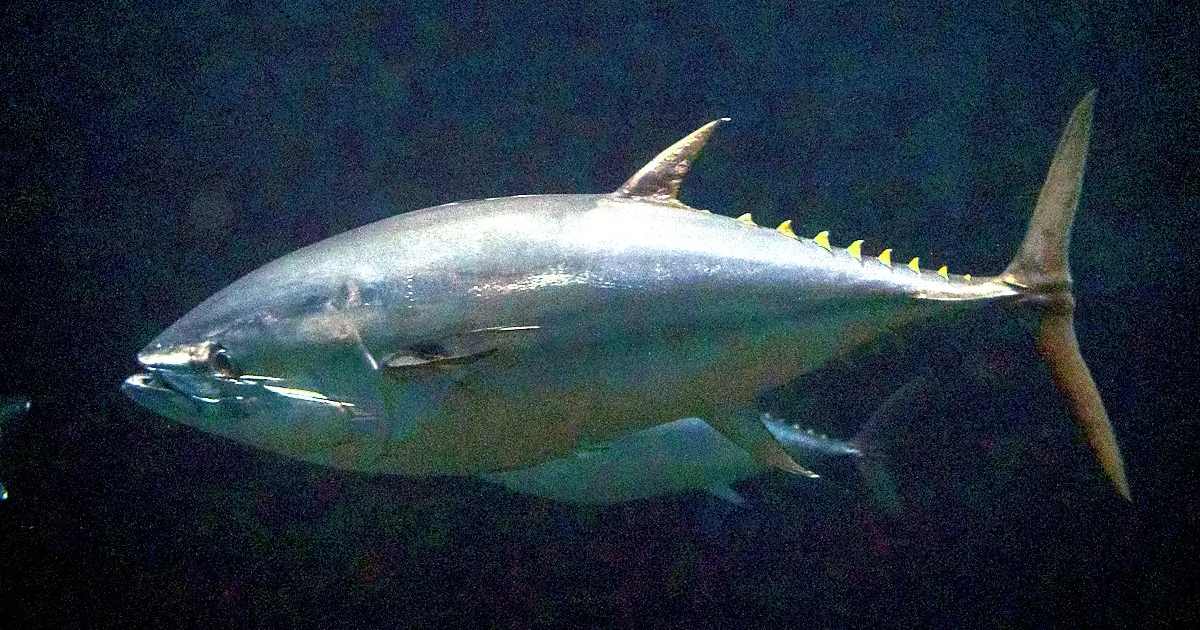
- Size: Up to 4.6 meters (15 ft)
- Habitat: Open waters of the Atlantic and Pacific Oceans
- Key Feature: Exceptional speed and prized for sushi
The bluefin tuna, revered for its speed and agility, is a marvel of the open ocean. Reaching lengths of up to 4.6 meters (15 ft), these powerful swimmers can cross entire oceans in their lifetime. They are primarily found in the Atlantic and Pacific Oceans, thriving in deep, temperate waters. Their streamlined bodies and muscular build make them some of the fastest fish, capable of reaching speeds of up to 70 km/h (43 mph).
Apart from their athletic prowess, bluefin tuna are also highly valued in the culinary world, especially in sushi. Unfortunately, this has led to overfishing, pushing the species towards endangered status. Conservation efforts are crucial to maintaining the balance of marine ecosystems and the cultural heritage surrounding this magnificent fish. Protecting bluefin tuna not only safeguards a crucial component of marine biodiversity but also preserves the livelihoods of communities that rely on sustainable fishing practices.
9. Hammerhead Shark
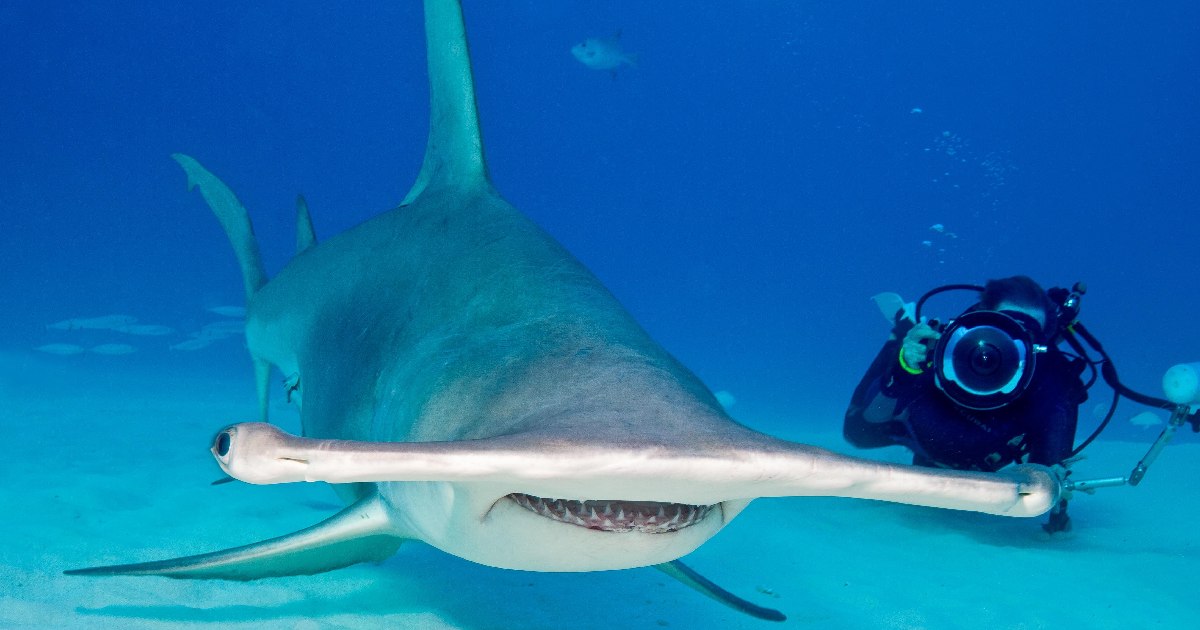
- Size: Up to 6.1 meters (20 ft)
- Habitat: Tropical and warm temperate seas
- Key Feature: Distinctive hammer-shaped head
Hammerhead sharks, with their unmistakable hammer-shaped heads, are among the ocean’s most iconic residents. These unique sharks can grow up to 6.1 meters (20 ft) and are found in tropical and warm temperate seas. The peculiar shape of their heads, known as a cephalofoil, enhances their sensory perception, allowing them to detect prey buried in the sand.
Hammerheads are social creatures, often seen swimming in schools during the day. They primarily feed on stingrays, fish, and crustaceans. Despite their formidable appearance, hammerhead sharks are threatened by overfishing and habitat loss, highlighting the need for protective measures to ensure their survival. The cephalofoil design provides a hydrodynamic advantage and a sensory boost, making hammerhead sharks one of the most evolutionarily distinct and fascinating shark species.
8. Beluga Sturgeon
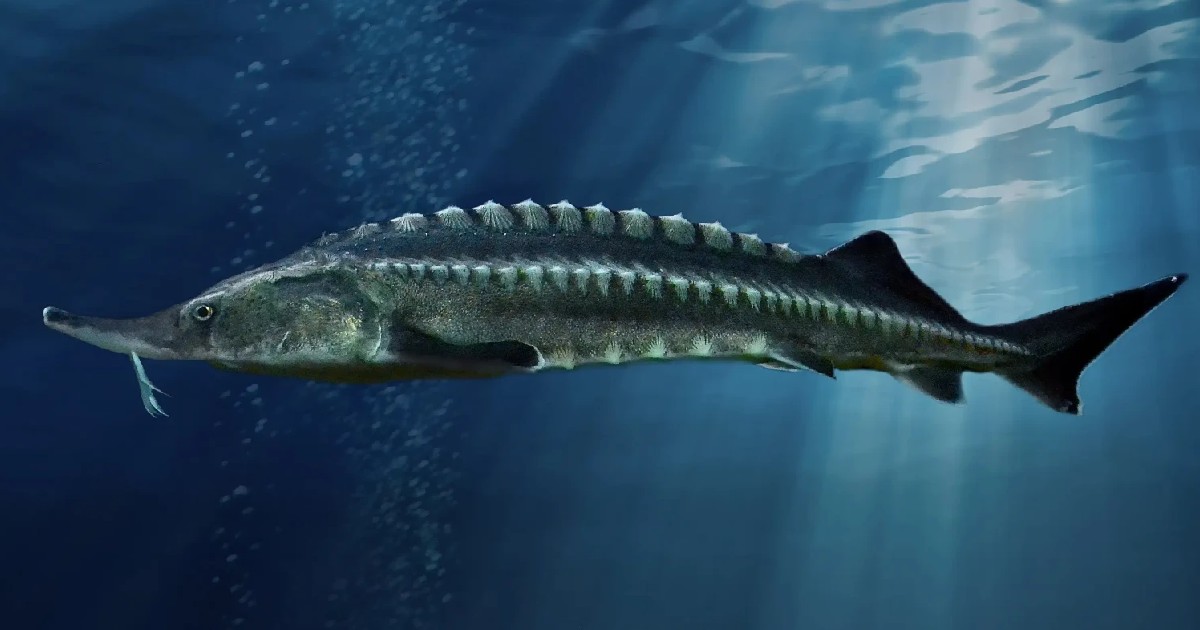
- Size: Up to 7.2 meters (24 ft)
- Habitat: Caspian and Black Sea basins
- Key Feature: Source of prized caviar
The beluga sturgeon, an ancient fish species, is renowned for its immense size and the luxurious caviar it produces. These prehistoric giants can reach lengths of up to 7.2 meters (24 ft) and are predominantly found in the Caspian and Black Sea basins. Their elongated bodies and armor-like scales make them a unique presence in these waters.
Beluga sturgeons have been around for millions of years, surviving through significant geological changes. However, their numbers have dwindled due to overfishing and habitat degradation. Protecting this species is vital not only for maintaining biodiversity but also for preserving the caviar tradition that many cultures cherish. As the largest freshwater fish in the world, the beluga sturgeon represents a critical link in freshwater ecosystems, requiring immediate conservation action to prevent its extinction.
7. Greenland Shark
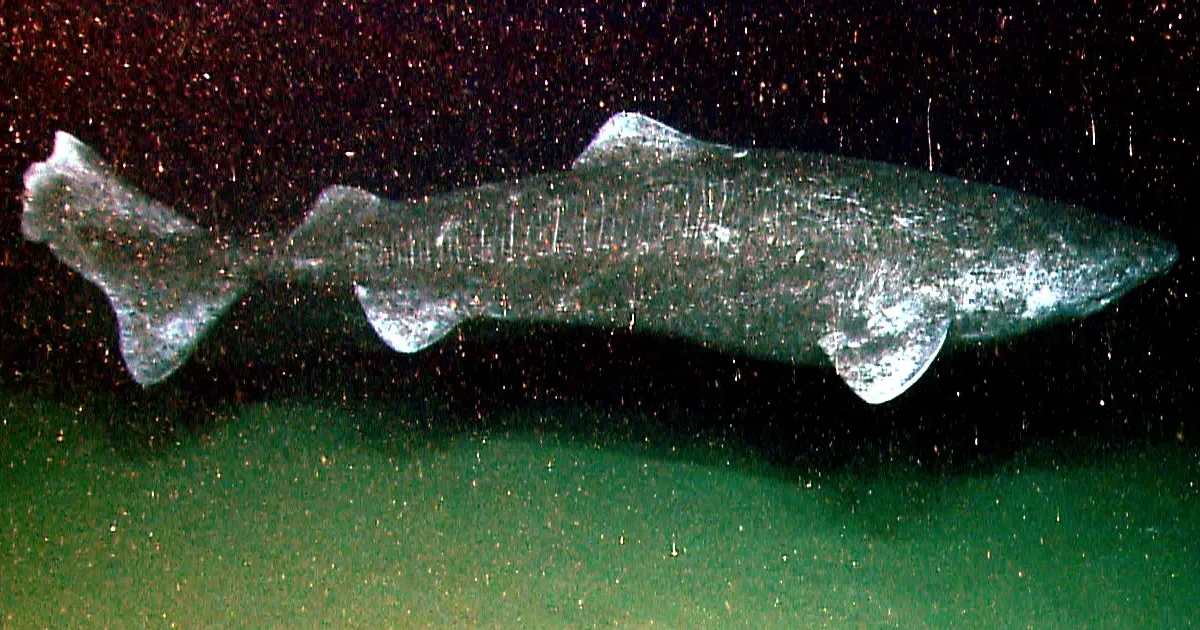
- Size: Up to 7.3 meters (24 ft)
- Habitat: Arctic and North Atlantic oceans
- Key Feature: Extraordinary lifespan
The Greenland shark is a mysterious and ancient dweller of the icy Arctic and North Atlantic oceans. These slow-moving giants can grow up to 7.3 meters (24 ft) and are known for their incredibly long lifespans, with some individuals living over 400 years. Their sluggish nature and ability to thrive in freezing temperatures make them fascinating subjects of scientific study.
Greenland sharks primarily feed on fish and marine mammals, scavenging carcasses on the ocean floor. Despite their size, they pose little threat to humans. However, the species is vulnerable to bycatch and climate change impacts, emphasizing the need for further research and conservation efforts to protect these ancient mariners. As an extant species from a bygone era, the Greenland shark provides valuable insights into the resilience of marine life in harsh environments.
6. Ocean Sunfish (Mola Mola)
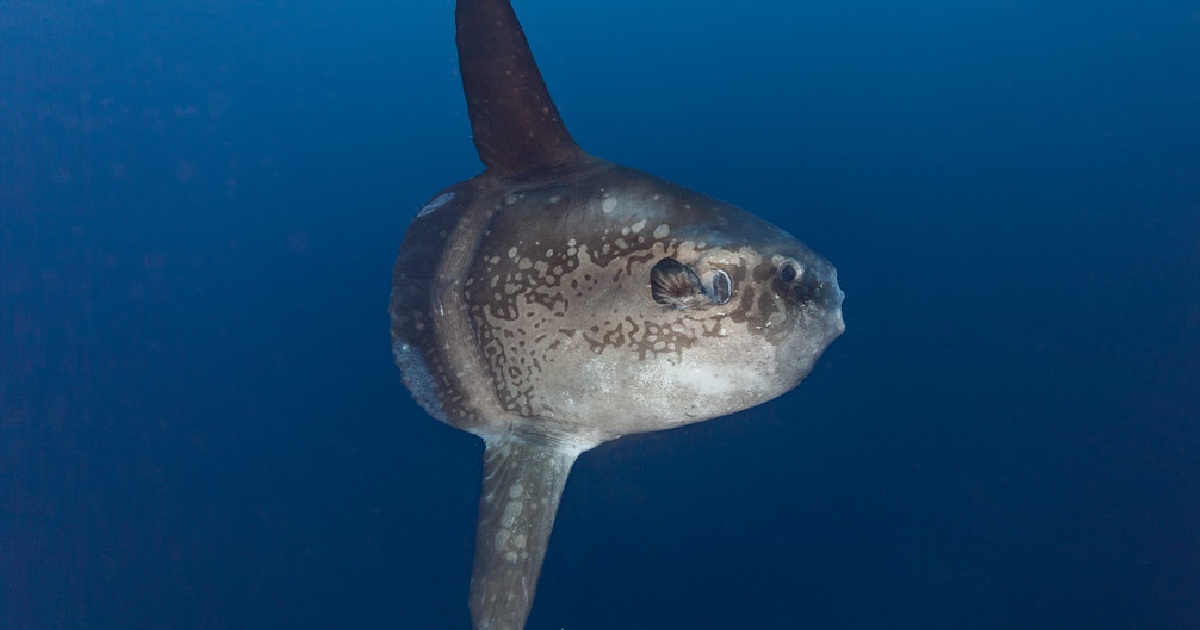
- Size: Up to 3.3 meters (11 ft)
- Habitat: Tropical and temperate oceans
- Key Feature: Heaviest bony fish
The ocean sunfish, or mola mola, is one of the most unusual-looking fish in the sea. Reaching up to 3.3 meters (11 ft) in length and weighing over 2,000 kg (4,400 lbs), they are the heaviest of all the bony fish. These peculiar creatures have a flattened, disk-like body and are often seen basking at the surface, hence their name.
Mola molas inhabit tropical and temperate oceans worldwide, where they feed on jellyfish, small fish, and zooplankton. Despite their enormous size, they are gentle giants. However, they face threats from fishing activities and marine debris, which can severely impact their populations. As the largest bony fish, the ocean sunfish’s unique anatomy and behavior make it a subject of great interest to marine biologists and conservationists.
5. Giant Oceanic Manta Ray
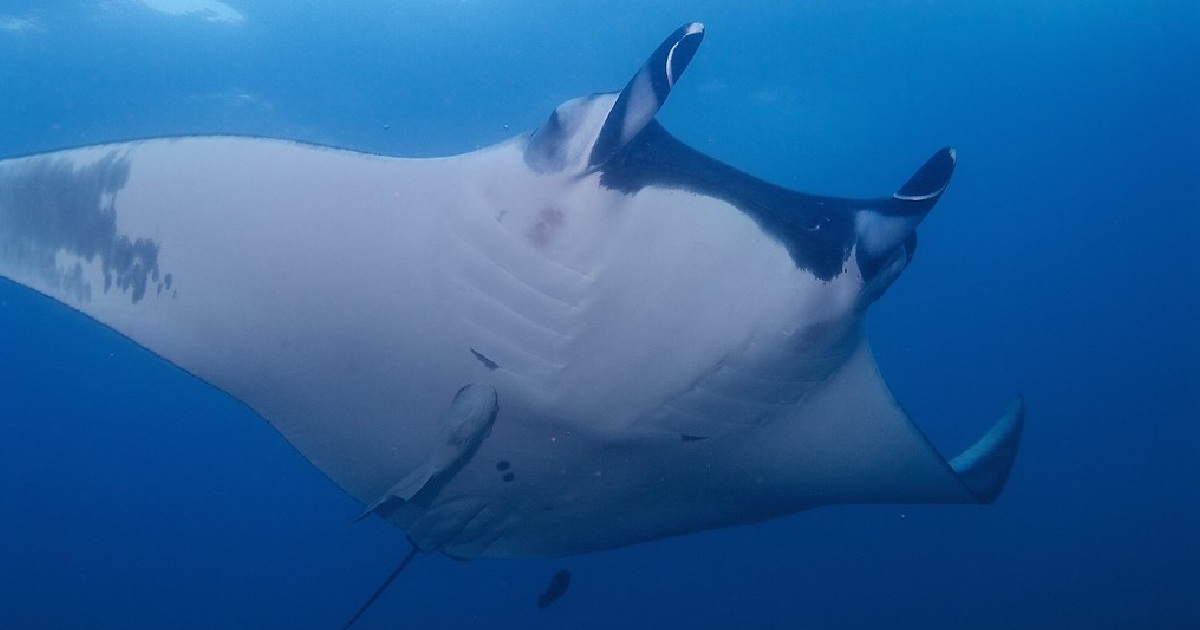
- Size: Up to 7 meters (23 ft)
- Habitat: Tropical, subtropical, and temperate waters
- Key Feature: Largest ray species
The giant oceanic manta ray often likened to an underwater bird, is a majestic inhabitant of the world’s oceans. These rays can reach widths of up to 7 meters (23 ft) and are known for their graceful swimming patterns. They primarily inhabit tropical, subtropical, and temperate waters, gliding through the seas with their large, wing-like pectoral fins.
Manta rays are filter feeders, consuming vast amounts of plankton as they swim with their mouths open. Despite their size, they are harmless to humans and are a sight to behold for divers and marine enthusiasts. However, they are classified as threatened species due to bycatch and habitat destruction, necessitating international conservation efforts. The giant oceanic manta ray’s role in the marine ecosystem is crucial, as they help control plankton populations and maintain the health of coral reefs.
4. Tiger Shark
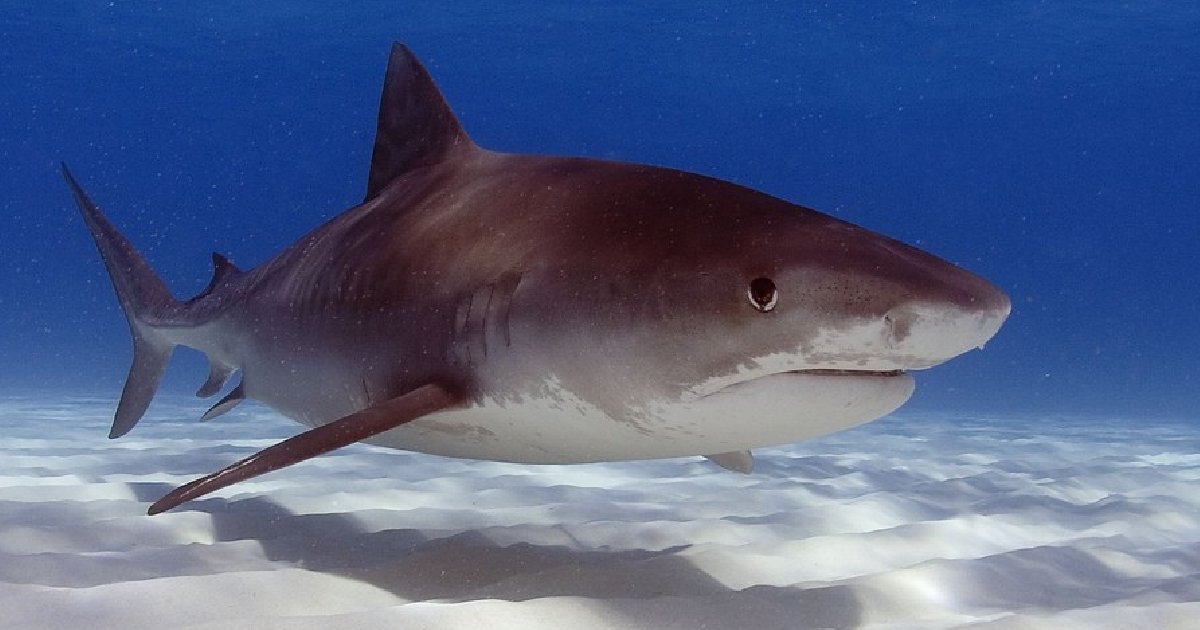
- Size: Up to 5.5 meters (18 ft)
- Habitat: Tropical and temperate waters worldwide
- Key Feature: Notable for its stripes and varied diet
Tiger sharks, named for their characteristic dark stripes, are among the ocean’s most formidable predators. These sharks can grow up to 5.5 meters (18 ft) and are found in tropical and temperate waters around the globe. Their stripes fade as they age, but their voracious appetites and varied diets remain.
Tiger sharks are often described as the “garbage cans of the sea” because they will eat almost anything, from fish and seals to birds and even license plates. Their indiscriminate feeding habits play a crucial role in maintaining the balance of marine ecosystems. Despite their resilience, tiger sharks face threats from overfishing and habitat degradation. Understanding the ecological importance of tiger sharks is vital, as they help control the populations of various marine species, thereby supporting the overall health of their habitats.
3. Great White Shark

- Size: Up to 6.4 meters (21 ft)
- Habitat: Cool coastal waters worldwide
- Key Feature: Apex predator with a fearsome reputation
The great white shark is a big fish, arguably the most famous of all shark species, known for its size, power, and fearsome reputation. These apex predators can reach lengths of up to 6.4 meters (21 ft) and are found in cool coastal waters around the world. Great whites are top-tier hunters, preying on marine mammals, fish, and seabirds.
Despite their notoriety, great white sharks play a vital role in ocean health by keeping prey populations in check. They are, however, threatened by overfishing and bycatch, as well as habitat loss. Conservation efforts are essential to ensure the survival of these iconic giants. The presence of great white sharks indicates a healthy marine environment, as their hunting activities help maintain the balance of marine food webs.
2. Basking Shark
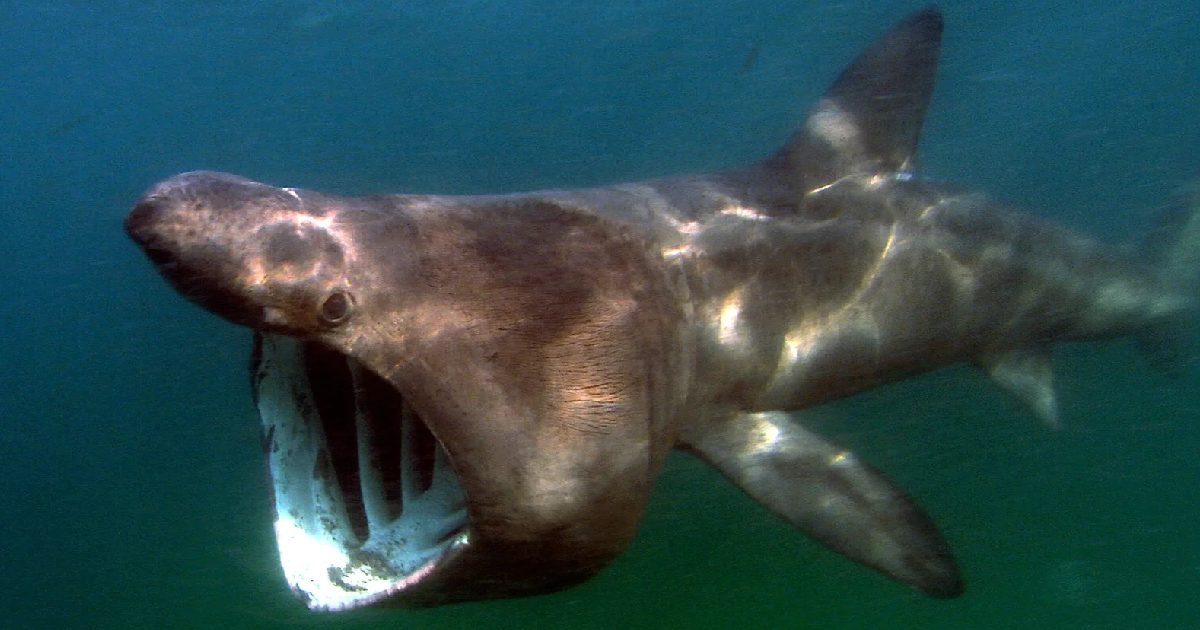
- Size: Up to 12.27 meters (40 ft)
- Habitat: Cold and temperate seas
- Key Feature: Second-largest fish, filter feeder
The basking shark is a gentle giant of the seas, second only to the whale shark in size. These enormous filter feeders can grow up to 12.27 meters (40 ft) and inhabit cold and temperate waters. They swim with their mouths wide open, filtering plankton from the water, which provides their primary source of nutrition.
Basking sharks are harmless to humans and are often spotted near the surface, basking in the sun. Despite their large size, they face numerous threats, including fishing and habitat loss. Protecting these peaceful giants is
critical for maintaining the ecological balance of marine environments. As the second-largest fish in the world, basking sharks highlight the importance of protecting marine biodiversity to ensure the health and resilience of ocean ecosystems.
1. Whale Shark
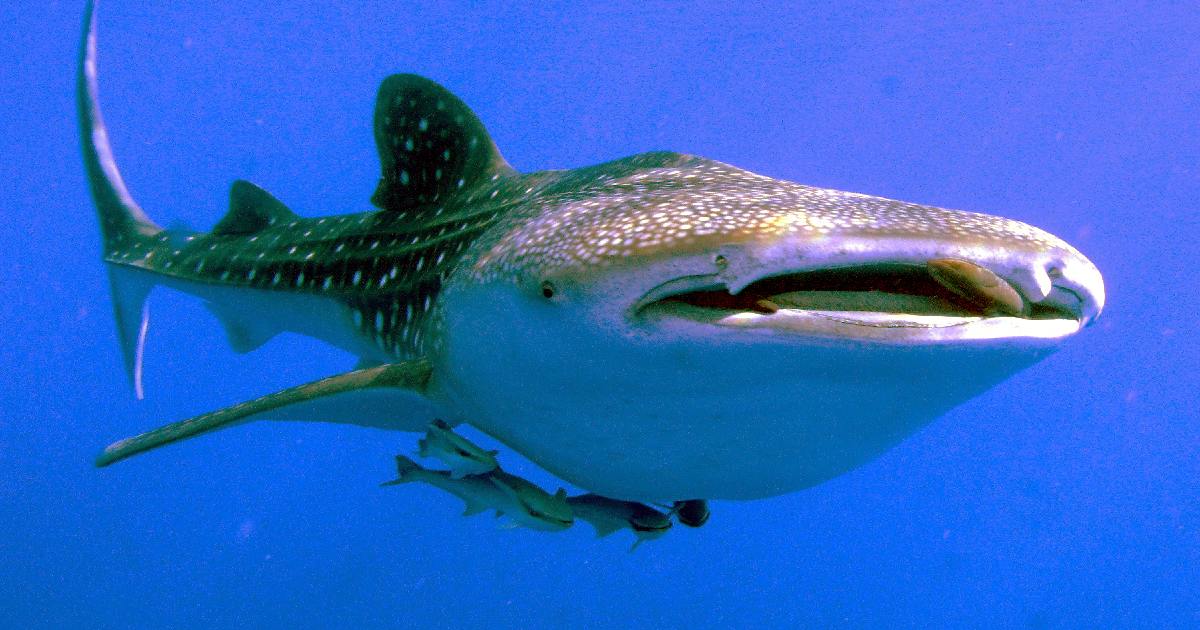
- Size: Up to 18.8 meters (62 ft)
- Habitat: Warm-temperate and tropical waters worldwide
- Key Feature: Largest fish species, filter feeder
The whale shark holds the title of the largest fish in the world, with some individuals reaching up to 18.8 meters (62 ft) in length. These gentle giants inhabit warm-temperate and tropical waters globally, where they filter feed on plankton, krill, and small fish. Despite their immense size, whale sharks pose no threat to humans and are often described as friendly and curious.
Whale sharks are a remarkable sight, with their distinctive patterns of white spots and stripes. They play a crucial role in marine ecosystems by maintaining the balance of plankton populations. However, they are classified as endangered due to threats from fishing, habitat loss, and boat strikes. Conservation efforts are vital to ensure the continued survival of these magnificent creatures. Whale sharks are an indicator of ocean health, and their protection is essential for preserving the biodiversity and stability of marine environments.
Conclusion
The largest fish in the world are not only awe-inspiring due to their size but also play crucial roles in maintaining the health and balance of marine ecosystems. From the immense whale shark to the mysterious Greenland shark, these species face numerous threats, including overfishing, habitat loss, and climate change.
Protecting these giants is essential for preserving the biodiversity and resilience of our oceans. By understanding and appreciating these incredible creatures, we can work towards a future where they continue to thrive in their natural habitats. The ongoing efforts to conserve these threatened species require global cooperation and commitment, emphasizing the interconnectedness of human activities and marine life.
Frequently Asked Questions (FAQs)
What is the largest fish, not a shark?
The largest fish that is not a shark is the giant oceanic manta ray. These majestic creatures can reach widths of up to 7 meters (23 ft). They primarily inhabit tropical, subtropical, and temperate waters. Known for their graceful swimming patterns, manta rays are filter feeders, consuming vast amounts of plankton as they glide through the ocean.
What is the biggest giant fish in the world?
The biggest giant fish in the world is the whale shark. These gentle giants can grow up to 18.8 meters (62 ft) in length, making them the largest extant fish species. Whale sharks inhabit warm-temperate and tropical waters worldwide, feeding on plankton, krill, and small fish through filter feeding. Despite their size, they are harmless to humans and are often described as friendly and curious.
Is a whale shark bigger than a blue whale?
No, the whale shark is not bigger than the blue whale. While whale sharks are the largest fish species, reaching lengths of up to 18.8 meters (62 ft), blue whales are much larger. Blue whales are the largest animals to have ever lived, growing up to 30 meters (98 ft) in length. Unlike whale sharks, blue whales are mammals and belong to the cetacean family.
What is the largest freshwater fish?
The beluga sturgeon holds the title of the largest freshwater fish. These ancient fish can grow up to 7.2 meters (24 ft) and are primarily found in the Caspian and Black Sea basins. Known for their elongated bodies and armor-like scales, beluga sturgeons are also renowned for producing luxurious caviar, making them highly valuable and necessitating conservation efforts.
What is the biggest fish caught ever?
The biggest fish ever caught is a whale shark. In 1947, a whale shark measuring 12.65 meters (41.5 ft) and weighing an estimated 21.5 tons was caught near the island of Baba, off the coast of Karachi, Pakistan. This catch remains one of the largest recorded instances of a fish being captured. However, due to conservation efforts, whale sharks are now protected species, and such captures are discouraged.

